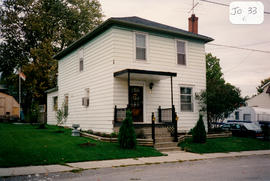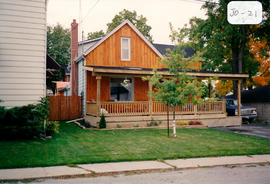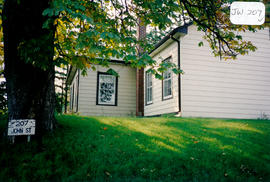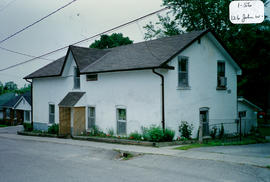33 Joseph Street - The Thorpe House
- CA BWGPL GJ-HB-2017-04-07-04
- Item
- 1995
Part of George Jackson fonds
The Thorpe House is located at 33 Joseph St. (on the northeast corner of Joseph and Moore Streets). It was built pre-1900 in the Ontario Vernacular style. The two-storey, two-bay house has a simple, rectangular plan, a side hall, and a medium-pitched, hip roof. A large addition has been added to the rear. The original, wood trim is still apparent around the replacement windows and door. Wood frame construction is clad with vinyl siding. The original cladding was shiplap siding. According to the 2000 inventory, the modern, metal awning over the entrance is not sympathetic with the remainder of the building. It also notes that this modest house probably had few decorative details originally and that few existing building elements (other than the building’s form) appear to be original. (1, 3)
George Jackson










